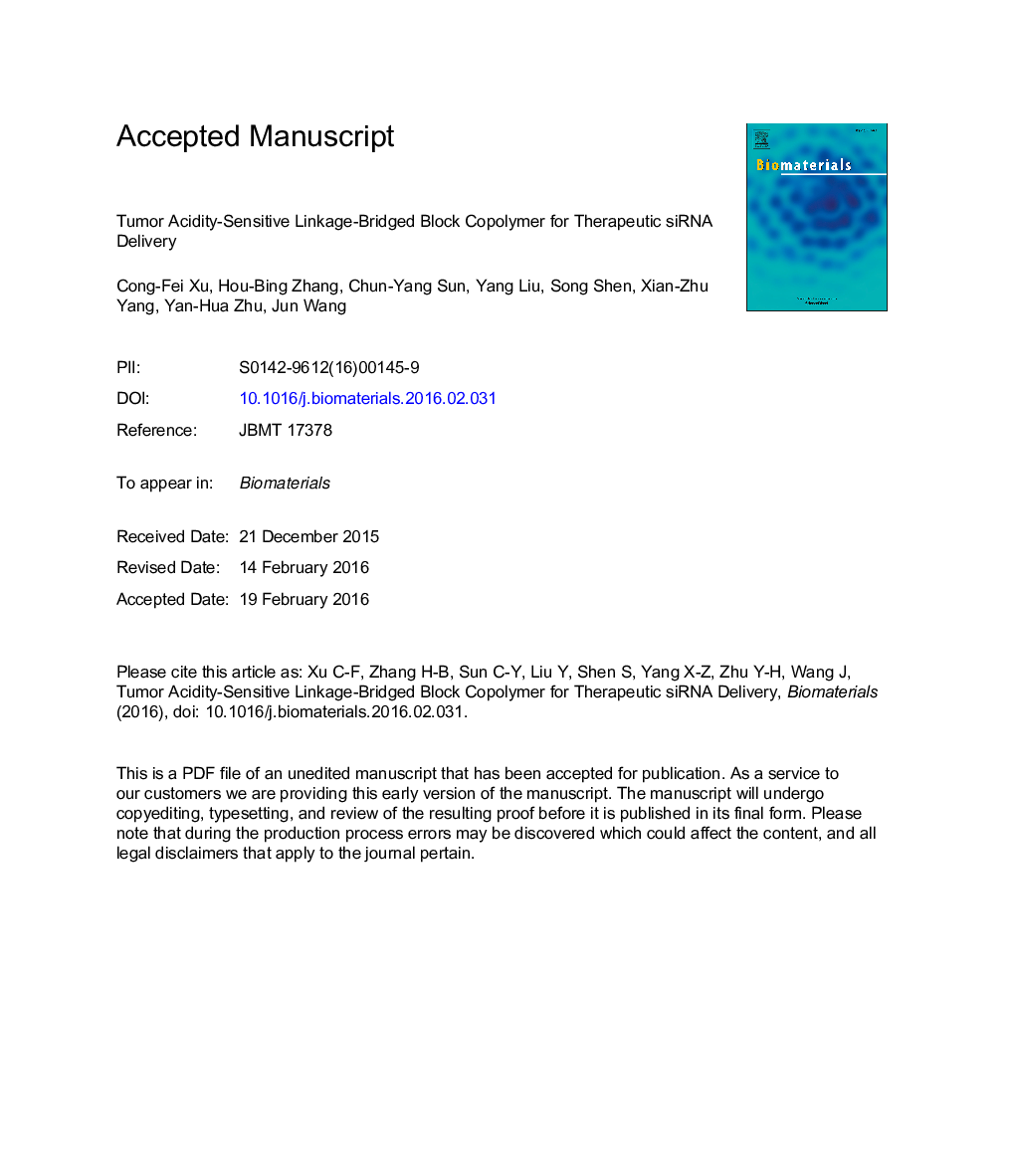| Article ID | Journal | Published Year | Pages | File Type |
|---|---|---|---|---|
| 6485027 | Biomaterials | 2016 | 50 Pages |
Abstract
The design of ideal nanoparticle delivery systems should be capable of meeting the requirements of several stages of drug delivery, including prolonged circulation, enhanced accumulation and penetration in the tumor, facilitated cellular internalization and rapid release of the active drug in the tumor cells. However, among the current design strategies, meeting the requirements of one stage often conflicts with the other. Herein, a tumor pH-labile linkage-bridged block copolymer of poly(ethylene glycol) with poly(lacide-co-glycolide) (PEG-Dlinkm-PLGA) was used for siRNA delivery to fulfill all aforementioned requirements of these delivery stages. The obtained siRNA-encapsulating PEG-Dlinkm-PLGA nanoparticle gained efficiently prolonged circulation in the blood and preferential accumulation in tumor sites via the PEGylation. Furthermore, the PEG surface layer was detached in response to the tumor acidic microenvironment to facilitate cellular uptake, and the siRNA was rapidly released within tumor cells due to the hydrophobic PLGA layer. Hence, PEG-Dlinkm-PLGA nanoparticles met the requirements of several stages of drug delivery, and resulted in the enhanced therapeutic effect of the nanoparticular delivery systems.
Keywords
Related Topics
Physical Sciences and Engineering
Chemical Engineering
Bioengineering
Authors
Cong-Fei Xu, Hou-Bing Zhang, Chun-Yang Sun, Yang Liu, Song Shen, Xian-Zhu Yang, Yan-Hua Zhu, Jun Wang,
